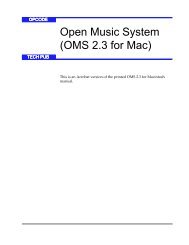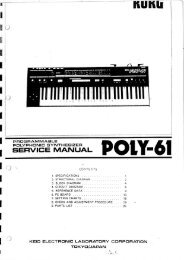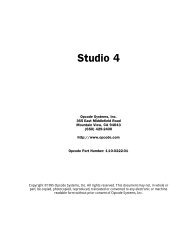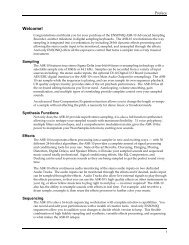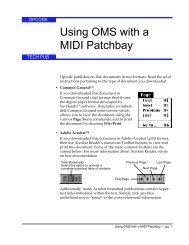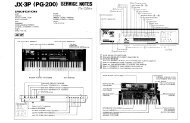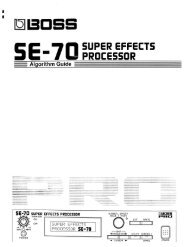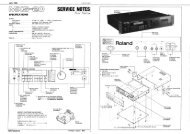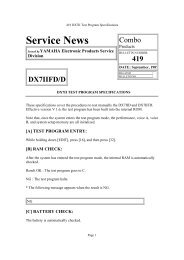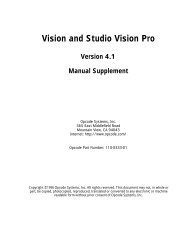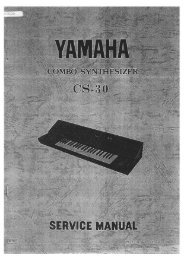Opcode PatchTalk User Guide - House of Synth
Opcode PatchTalk User Guide - House of Synth
Opcode PatchTalk User Guide - House of Synth
You also want an ePaper? Increase the reach of your titles
YUMPU automatically turns print PDFs into web optimized ePapers that Google loves.
You are sending to thedevice too soon after ithas sent dataThe device has a bug inits MIDI implementation.The patch name is setincorrectly (or becomesgarbage) whenreceivingSome devices require a time delay after it has sent or received databefore another message can be sent to it. Check the device’s <strong>User</strong>’sManual to see if this applies. Use the command Delay to introducedelays between system exclusive messages.Be careful about assuming this. Make sure your current setup workswith other devices by plugging the same MIDI cables into otherdevices. Then check the MIDI specification and all data you sent andreceived. If you still believe it is a bug in your device, call the manufacturer.Be aware that some devices may not be changed just becauseyou have reported a bug. Try to work around the bug if at allpossible.The received data is incorrect.• View the data immediately before placing it in Patch or Bank anddetermine its validity.The patch size, name <strong>of</strong>fset, or name length is specified incorrectly.• Check the Define Custom Patch Type dialog. Make sure that if thedevice does not support a name for this patch type that you addName Length to the size <strong>of</strong> the raw patch (as stored in the device).The data is somehow encoded.• You may find this information in the device’s <strong>User</strong>'s manual—andthen again, you may not. If the information isn’t there, try alteringthe patch in the device and then sending back what it sent you. Ifthis works (the old patch is received correctly) see “DecipheringPatch Data,” which follows. One good clue as to whether the datais nibblized is whether the size <strong>of</strong> the data that the device sendsyou is bigger than what is specified in its MIDI specification.Deciphering PatchDataYou may not be able to tell by looking at the device’s <strong>User</strong> Manualwhether the patch data is being encoded as it’s sent or not. If you’rehaving trouble displaying the patch’s name, or if the size <strong>of</strong> the datathe device sends is larger or smaller than the size specified in the MIDIspecification, all or part <strong>of</strong> the data may be encoded.A common way <strong>of</strong> encoding MIDI data in sys-ex messages is nibblizing.This is the process <strong>of</strong> converting one byte into two bytes. Thefirst byte contains the upper four bits <strong>of</strong> the original byte and thesecond byte contains the lower four bits. There are two consequences<strong>of</strong> this that you can look for when trying to determine if data isnibblized:• The data is twice as large as it would be if it were not nibblized.• No bytes have their high bit set (have values ≥ $80).<strong>Opcode</strong> Publication 1950906 - 29 - <strong>PatchTalk</strong> <strong>Guide</strong>



